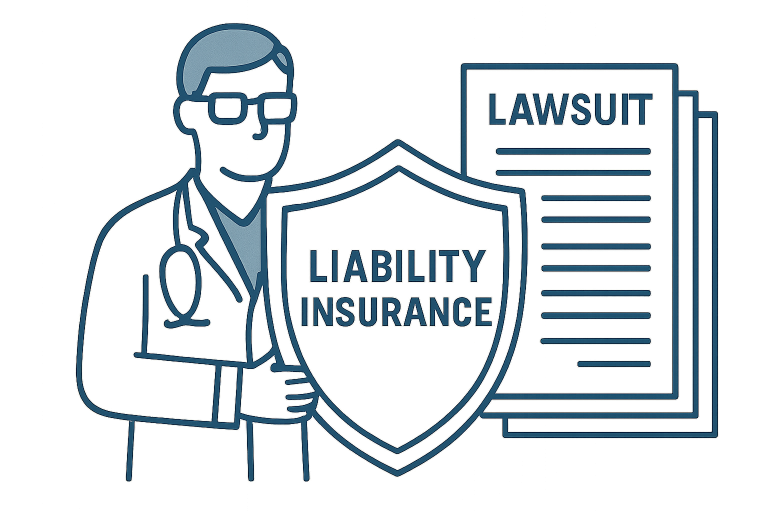Health
What Healthcare Professionals Should Know About Medical Liability Insurance

Key Takeaways
- Medical liability insurance is crucial for protecting healthcare providers from malpractice and negligence claims.
- Premiums and insurance risks are increasing in tandem with technological advancements and regulatory adjustments within the industry.
- Emerging practices such as AI integration and telemedicine introduce new liability scenarios and coverage requirements.
- Strategic risk management and staying updated on legal changes are critical for robust protection and compliance.
In an increasingly litigious healthcare environment, medical liability insurance provides a crucial safety net for doctors, nurses, and allied health professionals. In the event of a lawsuit alleging malpractice or negligence, the right liability policy can mean the difference between professional security and devastating financial loss. Early in your career or as your practice grows, understanding the core tenets of medical liability insurance—sometimes referred to as malpractice insurance—empowers you to choose the best coverage and avoid costly gaps. Learning more about programs like Coverys medical malpractice insurance can provide added peace of mind as you navigate the ever-evolving risk landscape in healthcare.
Whether you are working in private practice, a hospital setting, or delivering care through telemedicine platforms, every interaction with patients carries some degree of legal risk. Adequate and up-to-date liability coverage not only offers financial protection but also supports the delivery of high-quality care, enabling you to focus on your patients without fear of a legal crisis. As risk factors in healthcare evolve due to technological advancements, legislation, and industry trends, healthcare providers must remain proactive in assessing and updating their coverage.
Recent years have ushered in advances in artificial intelligence, expanded telemedicine access, and new legislative actions—all of which influence the legal and financial risks you face. Misunderstandings about the nature and necessity of liability insurance are also rampant, sometimes deterring healthcare professionals from obtaining the protection they genuinely require.
Understanding Medical Liability Insurance
Medical liability insurance protects healthcare practitioners from the financial consequences of lawsuits arising from alleged professional errors or negligence. While coverage specifics vary, most policies pay for legal fees, expert witness costs, court costs, and settlement or judgment payouts up to specified limits. Without this essential protection, a healthcare provider personally bears the burden of legal defense and any awarded damages, which can easily reach into the hundreds of thousands or millions of dollars.
Even experienced professionals face the risk of allegations, as medical outcomes can be unpredictable and patient expectations high. Comprehensive liability insurance is not only a safeguard against financial ruin, but it is also often a legal or credentialing requirement for hospital privileges and employment contracts. Modern policies can be customized for specialties, employment type, and evolving modes of care such as telemedicine.

Current Trends in Medical Liability Insurance
The healthcare industry is experiencing a notable rise in medical liability insurance premiums, reaching over $55 billion annually in the U.S., driven by increasing compensation for medical practitioners, higher defense costs for claims, and a rise in substantial jury verdicts. This growing fiscal burden is affecting healthcare expenses broadly.
Furthermore, the integration of artificial intelligence (AI) and digital tools in patient care has raised significant concerns regarding liability. As physicians frequently utilize AI for diagnostics and personalized care, inaccuracies associated with these technologies could lead to complex legal issues, particularly surrounding negligence. A 2024 report highlights that more than 60% of physicians utilize AI support tools, thereby increasing their exposure to these risks.
Telemedicine has emerged as a vital component of healthcare delivery, offering patient convenience but imposing regulatory challenges for providers. Malpractice insurance must evolve to address the complexities of multi-state practice, compliance with diverse care standards, and the potential for jurisdictional conflicts across state medical boards. Healthcare professionals must tailor their liability policies to include telemedicine coverage, preventing potential gaps in their protection against malpractice claims.
Common Misconceptions About Medical Liability Insurance
The first myth suggests that possessing insurance increases the likelihood of being sued. However, it clarifies that healthcare lawsuits primarily stem from perceived clinical failures rather than the existence of insurance. The underlying factor driving lawsuits is patient dissatisfaction with treatment outcomes, indicating that the presence of insurance does not directly correlate with increased litigation risk.
The second myth asserts that medical liability insurance is prohibitively expensive for providers. While attention-grabbing news often focuses on the high costs of premiums, the text emphasizes that numerous solutions are available to find affordable insurance policies. It highlights the importance of collaborating with experienced insurance brokers who have a thorough understanding of specific medical specialties and the associated risk tolerances. Such partnerships are essential for healthcare providers to secure adequate coverage at reasonable prices.
Risk Management Strategies
Continuous education is essential for healthcare professionals as it ensures they stay updated on new treatment protocols, technologies, and regulatory changes, thereby enhancing clinical competence and minimizing error rates. Comprehensive documentation of patient records serves as a robust defense against potential claims, reflecting adherence to appropriate clinical judgment and informed consent procedures. Furthermore, effective communication with patients is vital; engaging in transparent discussions about care risks and expectations fosters trust and reduces the likelihood of misunderstandings that could result in complaints or lawsuits.
Impact of Legislative Changes
Healthcare legislation, at both the state and federal levels, directly impacts malpractice liability exposure and insurance requirements. Recent state reforms may cap damages in malpractice suits or refine the definition of negligence, which could impact both risk exposure and insurance needs. New federal regulations regarding data privacy and telehealth service delivery also necessitate careful review and potential policy updates to ensure ongoing compliance.
Laws and best practices change frequently, so regular consultation with legal and insurance professionals is essential to proactively address new liabilities or find favorable changes to claims processes.
Conclusion
Medical liability insurance remains a non-negotiable element of any healthcare professional’s risk management toolkit. With shifting technological, legal, and patient care landscapes, regular review and thoughtful planning help ensure that coverage keeps pace with clinical realities. By understanding common misconceptions, keeping current with legislative developments, and embracing robust risk management protocols, healthcare providers can focus on what matters most: delivering the best possible patient care.
